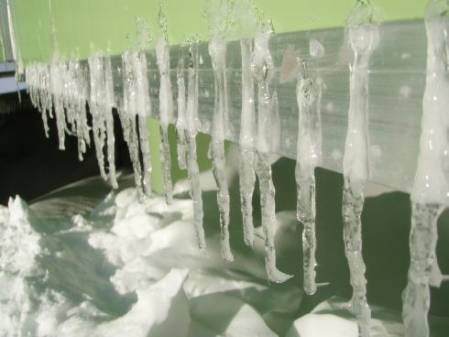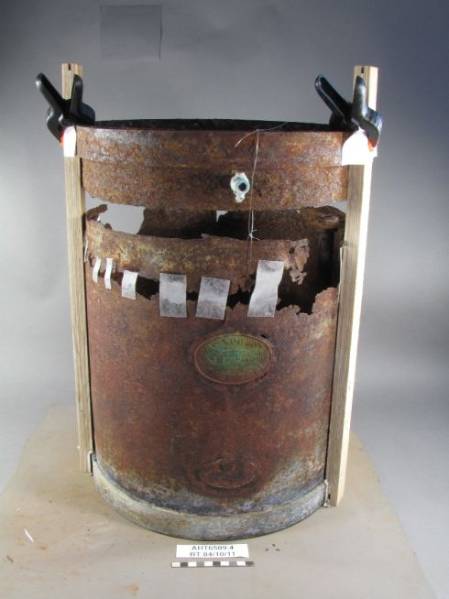Author: John
Date: 5th October 2011
Temperature: -24°C
Wind Speed: 0knots
Temp with wind chill: -24°C
Sunrise: 6.01am
Sunset 9.28pm

Liquid water! © AHT
Liquid water in Antarctica is an uncommon commodity in winter, unless it is sea water, and even then it is mostly under thick ice.
Today for the first time since I came to the Ice on the 20th August I saw liquid water in the outside environment, even at an air temperature of -27 degrees C. With the lengthening daylight incident solar energy increases. This is absorbed by any surface facing the sun, enough to melt snow on the northern walls of Scott Base. The water ran down the wall and then immediately refroze into icicles.

Acetylene generator (very corroded, and supported upside down for stability). © AHT
Yesterday I commenced treating an acetylene generator from Scott’s Terra Nova expedition hut at Cape Evans. This generator used water dripping onto calcium carbide to generate acetylene gas. The gas was then piped through the hut to be lit in various lamp fittings to provide illumination during the dark winter months. It was important that liquid water is available for this process to work. So, even though the reaction generated heat, the tank needed to be insulated with Gibson quilting to prevent the water freezing. This was a layer of sea grass held between layers of hessian.
Liquid water was, and still is, very important to life in the Antarctic!


